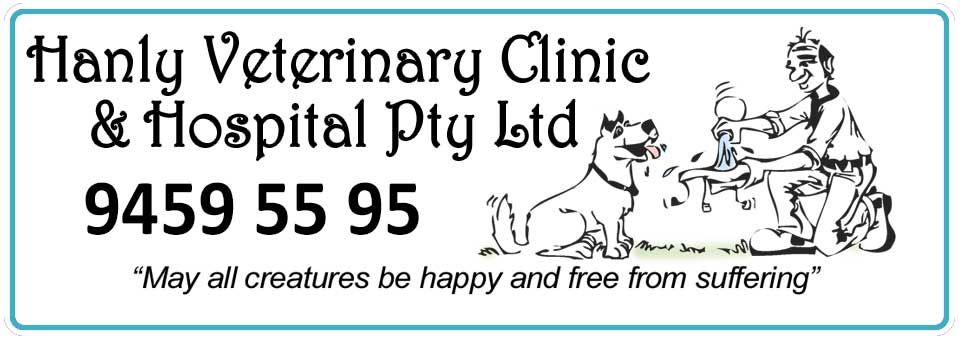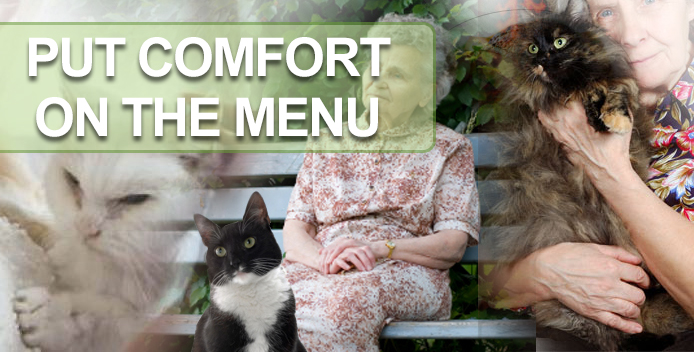Hanly Vets talk about old age in Cats
Old age is not a disease
As a result of advances in veterinary medicine, more knowledgeable care and improved nutrition, cats are now living much longer, healthier lives. But, just as for humans, the passage of time has its effects, and you may begin to notice that your once-frisky pet seems to have slowed down a bit. Being aware of the natural changes that can occur as your pet reaches his or her golden years, as well as what you can do to help keep your pet as healthy, active and comfortable as possible, can ensure that you both enjoy this stage in your Cats life to the fullest.
How and when will I know that my Cat is getting “old”?
As Cats move into the geriatric phase of their lives, they experience gradual changes that are remarkably like those of aging humans: hair turns a little grey around the face and eyes, their bodies are not as limber and reflexes not as sharp as they once were, hearing, eyesight and the sense of smell may deteriorate and energy levels, as well as attention spans, seem to diminish. In fact, the first sign of aging is often a general decrease in activity, combined with a tendency to sleep longer and more soundly.
Such signs may begin to manifest themselves around 8 years. Some cats can remain youthful until 10 years and even longer.
Furthermore, a healthy Cat, will most likely age later than one that has been affected by disease or environmental problems early in life. Again, as with humans, the aging process will vary with the individual. We will be able to assess and advise you when it’s time to consider your pet a “senior”.
Checkup time Seniors is recommended 4 times per year. Spring, summer, Autumn, and Winter.
As your pet ages, regular checkups become more important than ever. In fact, at this stage of your pet’s life, it is recommended that he or she receive a thorough examination at least every 6 months, as adult pets can age as much as 3 years or more (in human terms) within the period of one calendar year. Prevention is better than cure! as well as catching problems early often produces a better prognosis and outcome.
You and Your Vet – The Key is regular communication – Please keep us informed
Most importantly, you should tell us about any noticeable change in your pet’s physical condition or behavior.
A problem that you may assume is simply related to your pet’s advanced age may actually be the result of a treatable medical condition. For example, your pet’s reluctance to exercise may not stem from the normal decrease in energy that comes with age, but from arthritis or a heart condition both of which can be managed with the proper treatment. Regular checkups can thus help us work out a suitable preventative health program for your pet and catch any problems sufficiently early to provide effective treatment. When Working together, we can ensure that your pet’s senior years will be healthy and happy ones.
Your Senior Cat
Old cats are creatures of habit. They have been accustomed to eating, sleeping and exercising in familiar surroundings for years. Drastic or sudden changes may upset them. The older cat may become jealous of the attention paid to children or other pets, the old cat needs reassurance that it is still important. Additional affection in an old cat’s waning years will help make its remaining days much happier. Proper nutrition is essential for the health and longevity of the old cat. The food it eats will have a definite bearing on its life span, vigour and well-being. Unfortunately, even when it is fed a good diet, certain nutritional deficiencies may still appear. Various factors contribute to these deficiencies, among them poor absorption, loss of or painful teeth, and disease. Please advise us of any changes in behavior so we can work together to ensure your cat’s senior years are as happy and comfortable as possible.
Put comfort on the menu
You should also ensure that your pet is comfortable while eating. Most pet owners place food dishes and water bowls on the floor, but this may be a source of discomfort for both cats and dogs or overweight Pets, especially for one whose arthritis makes it difficult – or even painful – to bend down. Many pet supply outlets have eating tables that are specially designed with cut-outs for food and water containers and available in various heights to suit various sizes of dogs. Or you can make your own inexpensive solution to this problem: for example, a plastic crate covered in a towel to absorb spills.
The Hanly Veterinary Team are here to help, Please contact us if you have any concerns.



